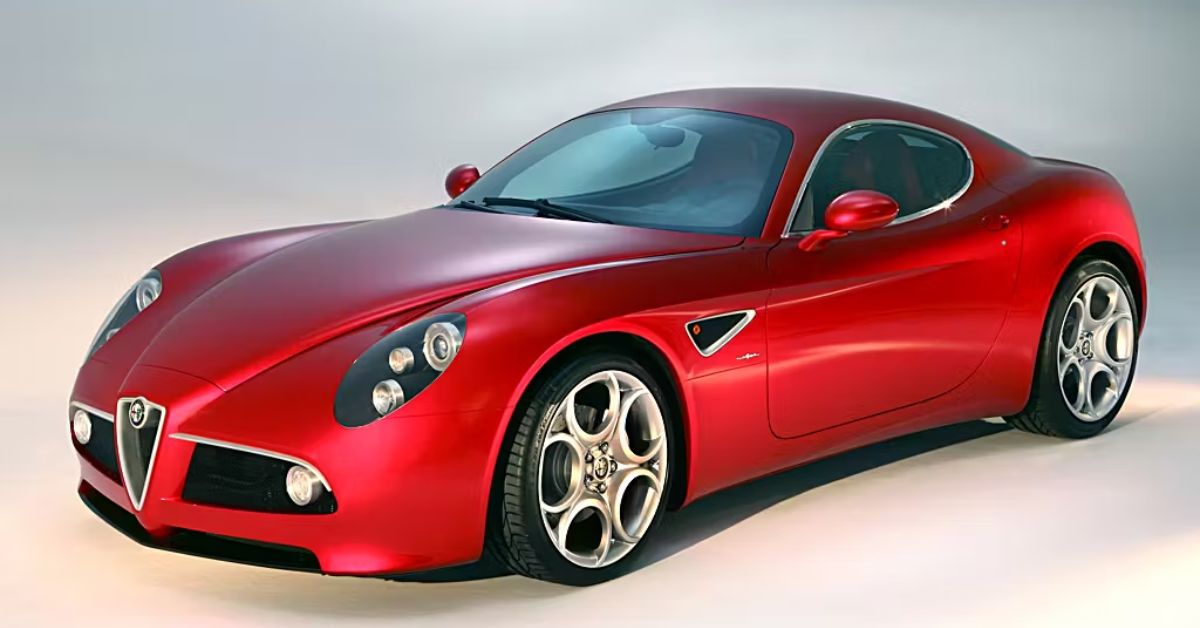In the pantheon of automotive legends, few cars evoke raw emotion and timeless beauty like the Alfa Romeo 8C Competizione. Produced between 2007 and 2010 in limited numbers, this Italian masterpiece wasn’t just a car — it was a love letter to Alfa Romeo’s racing heritage, a sculptural expression of performance, and a bold re-entry into the global sports car arena. With only 500 coupés and 329 Spiders ever made, the 8C Competizione remains one of the most coveted and collectible modern Alfa Romeos.
🏎️ Born from Racing Bloodlines
The name “8C Competizione” is steeped in history. “8C” refers to Alfa’s legendary eight-cylinder engines from the 1930s, which dominated races like the Mille Miglia and Le Mans. “Competizione” — Italian for “competition” — harks back to the 6C 2500 Competizione that raced in the 1950 and 1951 Mille Miglia, driven by none other than Juan Manuel Fangio.
This wasn’t just branding nostalgia. The 8C was designed to embody the spirit of Alfa’s racing past while embracing the technology and design of the 21st century. It was a car that looked backward to move forward — and it did so with breathtaking elegance.
🎨 Design That Stops Time
Styled by Wolfgang Egger and Daniele Gaglione at Centro Stile Alfa Romeo, the 8C Competizione is widely regarded as one of the most beautiful cars ever made. Its flowing lines, muscular haunches, and signature Alfa grille create a silhouette that’s both aggressive and sensual. The long hood and short rear deck evoke classic GT proportions, while the teledial alloy wheels and carbon fiber accents add modern flair.
The car’s body was crafted from carbon fiber, not just for weight savings but to allow for the complex curves and surfaces that define its aesthetic. Every angle of the 8C feels intentional — a blend of sculpture and aerodynamics that turns heads whether parked or in motion.
🔥 Ferrari Heart, Alfa Soul
Under the hood lies a 4.7-liter V8 engine developed by Ferrari and Maserati, producing 450 horsepower and 470 Nm of torque. Mated to a 6-speed automated manual transmission with paddle shifters, the 8C could sprint from 0 to 100 km/h in just 4.2 seconds and reach a top speed of 293 km/h.
But the numbers only tell part of the story. The engine’s soundtrack — a thunderous, operatic roar — is pure Italian drama. It’s a car that doesn’t just accelerate; it sings. The transaxle layout (front engine, rear-mounted gearbox) ensures near-perfect weight distribution, while double wishbone suspension and carbon ceramic Brembo brakes deliver razor-sharp handling and stopping power.
Driving the 8C isn’t just about speed — it’s about sensation. Every input, from throttle to steering, is met with immediate, visceral feedback. It’s a car that demands attention and rewards passion.
🛋️ Interior: Crafted for the Connoisseur
Inside, the 8C Competizione is a study in minimalist luxury. Carbon fiber bucket seats by Sparco, leather upholstery, and aluminum accents create a cockpit that’s both purposeful and refined. The layout is driver-focused, with analog gauges and tactile controls that emphasize engagement over distraction.
There’s no oversized touchscreen or digital gimmickry here — just the essentials, executed with Italian flair. It’s a cabin that invites you to drive, not just sit.
🌍 A Global Icon
The 8C Competizione marked Alfa Romeo’s return to the U.S. market after a 13-year absence. Its limited production and jaw-dropping design made it an instant collector’s item, with all units sold before production even began. Built at Maserati’s Modena facility, the 8C shared components with the GranTurismo but retained a distinct identity — more exotic, more emotional, more Alfa.
Its influence extended beyond its own production run. The 8C paved the way for the Alfa Romeo 4C and inspired a new generation of enthusiasts who saw in it the rebirth of a brand long associated with passion and performance.
🏁 Legacy and Reverence
Today, the Alfa Romeo 8C Competizione is more than a rare supercar — it’s a symbol. A symbol of what happens when design, engineering, and emotion converge. It’s a reminder that cars can be art, that performance can be poetic, and that heritage still matters in a world of algorithms and automation.
Collectors prize it not just for its scarcity, but for its soul. It’s a car that transcends specs and stats, living instead in the realm of feeling. And for those lucky enough to own one, it’s not just a vehicle — it’s a lifelong affair.
